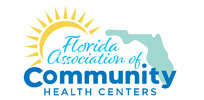Environmental safety is something most of us take for granted. We assume the water we drink is safe, the air we breathe is clean, and the food we eat is free of contaminants. But unfortunately, that’s not always the case. Chemicals and biological pathogens such as bacteria, viruses, and parasites are everywhere and can easily migrate through the air, water, and soil. Most of the time, we’re unaware of the substances we’re inhaling, swallowing, or touching. And even when we are aware, the risks of exposure to these substances are often unknown. But in some instances, they can be hazardous to our health and safety, causing serious injury and illness.
According to the Office of Disease Prevention and Health Promotion, preventable environmental factors lead to a quarter of deaths worldwide and 26% of deaths in children under the age of 5. Staying informed about these risks and how to protect yourself and your family are important to maintaining your overall health.
These risks include but are not limited to:
- Water contamination
- Air pollution
- Indoor air quality
- Pesticides
- Mold
According to data collected by the World Health Organization, water contamination is the leading cause of death and disease across the globe. Potential sources include agricultural runoff, septic tanks, improperly constructed or maintained wells, and urban runoff.
Pollution impacts all of us, with chronic exposure to air pollution being linked to cancer, long-term damage to the respiratory and cardiovascular systems, and early death. Indoor pollutants include mold, asbestos, and tobacco.
That being said, it is still possible to reduce pollution and repair some of the damage caused by consumers to the environment. We’ve created an infographic with 25 Ways You Can Reduce Pollution!
If you’re interested in learning more, please visit ConsumerNotice.org.
Michelle Llamas
Senior Editor
Consumer Notice

